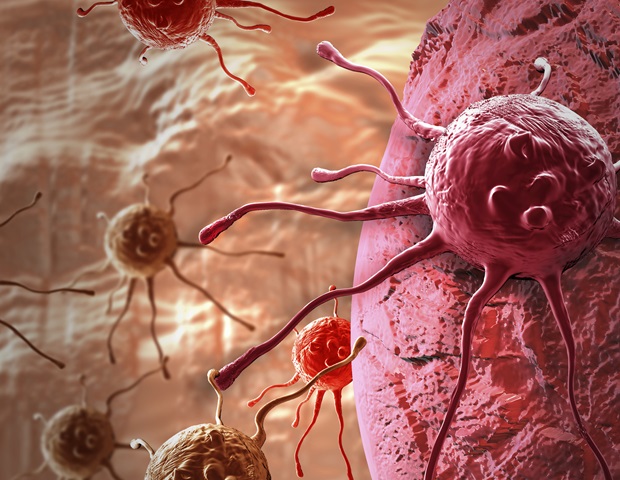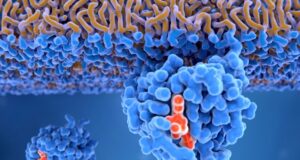
Since its discovery in the 1990s, “programmed cell death protein 1,” or PD-1, has been regarded as a leading target in cancer treatments. A “checkpoint” receptor that often resides on the surface of immune system cells, the PD-1 molecule works as a type of off switch that keeps immune cells from attacking other cells.
After its discovery, which revolutionized oncology and earned a 2018 Nobel Prize, researchers developed new drugs to block PD-1 and unleash the body’s immune system to fight cancer. Yet treatments leveraging PD-1 are only effective in a small fraction of cancer patients, highlighting the need for a deeper understanding of how PD-1 works. Much of our current knowledge of PD-1’s functions comes from studies in mice, grounded on the assumption that rodent and human biology operate similarly.
Researchers in UC San Diego’s School of Biological Sciences and School of Medicine have now discovered that this assumption may be flawed. In a comprehensive assessment of PD-1 that featured novel biochemical analyses, animal modeling and a new evolutionary roadmap tracing PD-1 back millions of years, the UC San Diego scientists and their colleagues at the Chinese Academy of Sciences found that PD-1 in mice is significantly weaker than the human version.
The study, led by assistant project scientist Takeya Masubuchi, revealed several previously unknown PD-1 characteristics, including a “motif” -; a specific sequence of amino acids -; that is vastly different in rodents and humans.
Our work uncovers unexpected species-specific features of PD-1 with implications for developing better pre-clinical models for PD-1. We found a motif in PD-1 that’s present in most mammals, including humans, but is surprisingly missing in rodents, making rodent PD-1 uniquely weaker.”
Enfu Hui, Associate Professor, School of Biological Sciences, Department of Cell and Developmental Biology, and senior author of the paper
The results of the study are published January 3, 2025, in the journal Science Immunology.
“Although many proteins in mice and humans have similar sequences, receptors in the immune system often show greater differences,” said Masubuchi. “Our study shows that these sequence differences can lead to functional variations of immune checkpoint receptors across species.”
Furthering their analysis, the researchers tested the impact of PD-1 humanization in mice -; replacing mouse PD-1 with the human version -; through co-senior author Professor Jack Bui’s laboratory in the Department of Pathology. They found that PD-1 humanization disrupted the ability of immune cells (T cells) to combat tumors.
“This study shows that as science progresses we need to have a rigorous understanding of the model systems that we use to develop medicines and drugs,” said Bui. “Finding that rodents might be outliers in terms of PD-1 activity forces us to rethink how to deploy medicines to people. If we’ve been testing medicines in rodents and they’re really outliers, we might need better model systems.”
To trace the PD-1 human-rodent differences over time, the researchers collaborated with co-senior author Professor Zhengting Zou and his Chinese Academy of Sciences colleagues. They discovered evidence of a major dip in ancestral rodent PD-1 activity around 66 million years ago after the Cretaceous–Paleogene (K–Pg) mass extinction event, which wiped out the (non-avian) dinosaurs. The analysis showed that the rodent PD-1 is uniquely weak among all vertebrates. The weakening may be attributed to special ecological adaptations to escape the effects of rodent-specific pathogens.
“The rodent ancestors survived the extinction event but their immune receptor activities or landscape might have been altered as a consequence of adaptation to new environmental challenges,” said Hui.
Future studies will assess the impact of PD-1 on the anti-tumor activity of T cells in a humanized context across various tumor types.
Source:
Journal reference:
Masubuchi, T., et al. (2025). Functional differences between rodent and human PD-1 linked to evolutionary divergence. Science Immunology. doi.org/10.1126/sciimmunol.ads6295.



